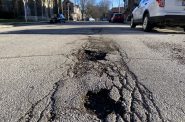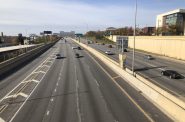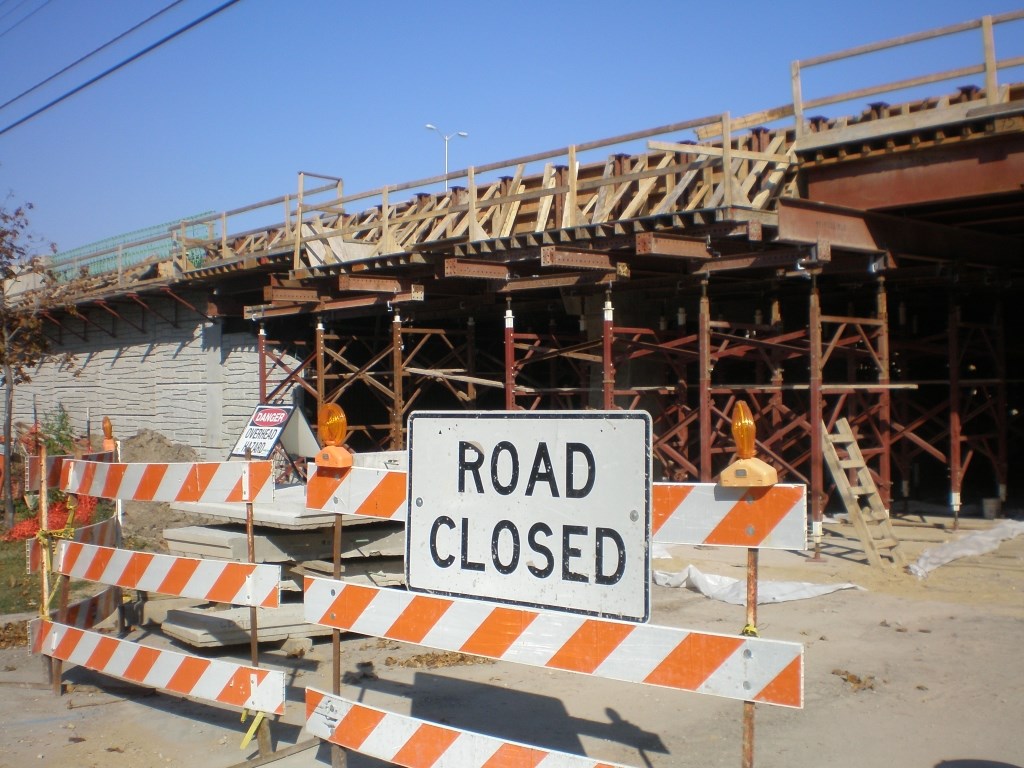A Conservative Take on State Transportation
Republicans say they need more money for roads, but the real problem is too much spending.
There is a battle brewing over transportation funding in Wisconsin causing fissures between some prominent Republicans. Specifically, Speaker Robin Vos and Gov. Scott Walker are at odds, but both of them are wrong.
Virtually everyone in Wisconsin agrees that maintaining a quality transportation infrastructure is vital to the state. Our economy flows across our roads, rails, waterways and skyways. Constructing and maintaining our transportation infrastructure is a defined responsibility of our government. It is the scope and means of fulfilling that responsibility upon which disagreements arise.
With an election looming and the next state budget debate coming in less than seven months, people are already maneuvering for position. The problem with the state transportation budget, as defined by some, is that the funding cannot keep up with the necessary spending.
The money for state transportation spending comes from a variety of sources. Chief among these sources are the fuel tax and registration fees, which account for 56 percent of all state transportation revenue. Twenty-four percent comes from federal funds, 7 percent comes from general purpose revenue and other funds, and in the most recent budget, 13 percent came from borrowing.
According to the state Department of Transportation, all state transportation revenue, 56 percent of all funds, has only risen by 3.4 percent in constant 2013 dollars since 2006. Over the same period, state transportation appropriations rose by 5.1 percent in constant 2013 dollars. The biggest problem is that the revenue from the fuel tax has been essentially flat for years. The concept of taxing fuel was a good one as it served as a proxy for usage with people who use the transportation system more having to pay more for it. But in an age of fuel-efficient vehicles, electric cars, etc. the fuel tax is a poor proxy for usage. A new taxing mechanism is needed, but there are more fundamental issues that need resolving before determining the optimum funding methodology.
Essentially, the cost of transportation is increasing faster than the revenue that is used to fund it. The state has been patching the problem in the past few budgets by borrowing to fill in the gap. This is where the rub between Walker and Vos comes in.
Walker has said that he does not support any additional funding for transportation needs unless an equal amount of money is taken out of the budget elsewhere. He recognizes that despite years of improvement, Wisconsin is still a tax hell. The state still ranks as one of the worst in terms of state and local tax burden (second worst by WalletHub, fourth worst by CNN Money). Walker is insisting the overall budget remain flat and wants the legislature to prioritize taxing and spending while not increasing the overall tax burden on the taxpayer. Walker’s goal is also laudable.
They are both missing the point. The problem with Wisconsin’s transportation budget is not that there is not enough money. The problem is the state is spending too much.
I wrote about this fact last May when this issue flared up again and it has not changed. A look at the Reason Foundation’s most recent 21st annual highway report shows Wisconsin is spending way more than comparable states.
For example, Wisconsin and Minnesota have almost the same number of highway miles at 11,766 and 11,833, respectively. They also have almost the same number of lane miles. They are both cold-weather states with a major metropolitan area. In terms of total spending on roads, Minnesota spends just over $132,000 per state-controlled mile. Wisconsin spends 72 percent more for a total of almost $227,000 per mile.
Breaking down the numbers is even more interesting. Wisconsin spends 25 percent more on administrative costs, but actually spends 38 percent less on maintenance. The big difference comes with construction. Wisconsin is spending 75 percent more than Minnesota for every new mile of road. In summary, Wisconsin spends a lot more money on administration and construction, but less on maintenance than Minnesota. That is a difference in priorities.
To think of it another way, if Wisconsin just lowered its spending to the same amount per mile as Minnesota and prioritized maintenance over construction, it would save Wisconsin $1.1 billion per year and solve the transportation budget problem overnight while leaving a surplus to return to the taxpayers.
Wisconsin does not have a funding or taxing problem — it has a spending problem. Vos and Walker should look for common ground on reducing spending before locking horns on how to pay for the spending.
Owen Robinson, columnist for the West Bend Daily News and blogger at www.bootsandsabers.com.
Op-Ed
-
Why Vote for MPS Funding Referendum
 Mar 30th, 2024 by Nehemiah Edwards
Mar 30th, 2024 by Nehemiah Edwards
-
Wisconsin’s Very Own Rudy Giuliani Should Not Oversee Judicial Ethics
 Mar 25th, 2024 by Richard Niess
Mar 25th, 2024 by Richard Niess
-
Voting at Wisconsin’s Universities Isn’t Easy
 Mar 17th, 2024 by Nicole Laudolff
Mar 17th, 2024 by Nicole Laudolff
Transportation
-
Just How Bad Are Milwaukee’s Roads?
 Apr 7th, 2024 by Graham Kilmer
Apr 7th, 2024 by Graham Kilmer
-
MPS Makes the Case for Referendum
 Mar 23rd, 2024 by Graham Kilmer
Mar 23rd, 2024 by Graham Kilmer
-
‘Fix at Six’ Group Wants I-94 Expansion Delayed For Civil Rights Report
 Mar 20th, 2024 by Jeramey Jannene
Mar 20th, 2024 by Jeramey Jannene

















Please elaborate…Does WI buy better concrete or rebar? Is it the union labor rate? The lining of (republican-funding) construction companies’ pockets?
Or…Does our higher spending during the compared terms result in roads that have longer lifetimes? WI DOT uses a 75-year design life, does MN?
Sources for these figures would be nice to have. Those are some significant differences.
Yes, Mr. Robinson, please elaborate on those staggering statistics.
It would also be interesting to know more about Wisconsin’s alleged expansion of roads based on super-inflated projections of needs.
This Politico article from a year ago also had plenty of alarming info about Milwaukee and Wisconsin’s excessive spending on freeways–and the incredible success of the road builders lobby.
http://www.politico.com/agenda/story/2015/07/transportation-infrastructure-scott-walker-highways-000153
As the saying goes, figures don’t lie and lair’s can figure.
Oh, and don’t forget Mr. Robinson, the road construction industry donates huge bucks to the hack’s in Madison.
If the solution was as simple as you state, I strongly urge you to run for office and help us out of the transportation quagmire.
Wisconsin has been constructing some huge mega-projects that cost a staggering amount in terms of cost per mile. Compare how much it would cost to construct a quarter mile of the zoo interchange versus a mile of country highway. If Wisconsin has been constructing 3 highway mega-projects (Zoo interchange, I-94, Verona Rd interchange in Madison) while Minnesota has only been constructing 2 highway mega-projects, that could have a big impact on cost per mile, and would certainly contribute to added administration costs because of the logistics/public input/environmental permitting, etc.
I do still think that excessive transportation spending is a valid concern (why spend money on building these mega projects, if you don’t have money maintain your old ones), but I’m just pointing out that it could be the reason for the difference in cost/mile.
Begonia, I know of two or three other Wisconsin highway mega-projects:
I-94 widening east of 70th Street (this isn’t part of the Zoo interchange)
I-39/I-90 widening from Madison to Beloit (just waiting for cash)
Hoan Bridge (this may be too small to count as “mega”)
To clarify, I didn’t mean to insinuate that Wisconsin only has 3 mega projects and Minnesota only has 2. I picked those numbers as a way of pointing out that even a small difference in mega projects could have a large impact on spending per mile and administration costs. I don’t even know if Minnesota has less, but I wouldn’t be surprised if it does, since Walker’s DOT has somewhat consistently favored spending on projects that are more expensive per mile (megaprojects and State Highways), instead of spending on state transportation aid to municipalities, which would be less expensive per mile.
Traffic projections used by WisDOT to widen highways have been reported to be inflated. I refer the reader to reports from 1K Friends of Wisconsin; and to the decision by Judge Adelman in stopping the plan to widen Highway 23. It’s a lucid decision which shows WisDOT did not use its own criteria to plan the widening. Now they must go back and look again at their numbers. If you read that, get ready for an interesting discussion of what WisDOT proposed to do when TDM and TAFIS are different; and what they actually did.